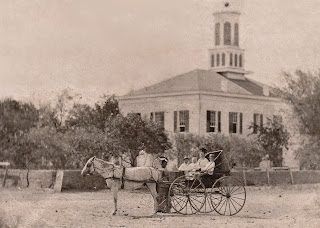
My search for Fanny Elam, Joe Williams's grandmother has resulted in a book that will be published next month called
Slave Transactions of Guadalupe County, Texas. I was able to locate from County records over 400 slave transactions, including bills of sale, slave mortgages, slave registers and probate records. These records include the names of about 1,500 slaves from Guadalupe County, and about 600 slave owners. Unfortunately, Fanny Elam was not among those found, nevertheless I hope the information will be valuable to others. The photo is Guadalupe County's second courthouse, built in 1857 by Ezra Keyser with slave labor, and where slave auctions were held on the first Tuesday of the month. I was surprised at the extent of the slave trade in this part of Texas, and have gained a new appreciation for what the slaves contributed to the local community, and of course for what they endured in the process. Although I did not find Fanny Elam, it helps me understand Joe Williams's background a little better. (Photo courtesy of the Seguin Heritage Museum.)
The book's publisher is Janaway Publishing. If interested, they can be contacted at 1-888-219-7932. Some folks in Seguin are doing a group order to save on shipping. Please let me know if you want to be included. Thanks.


